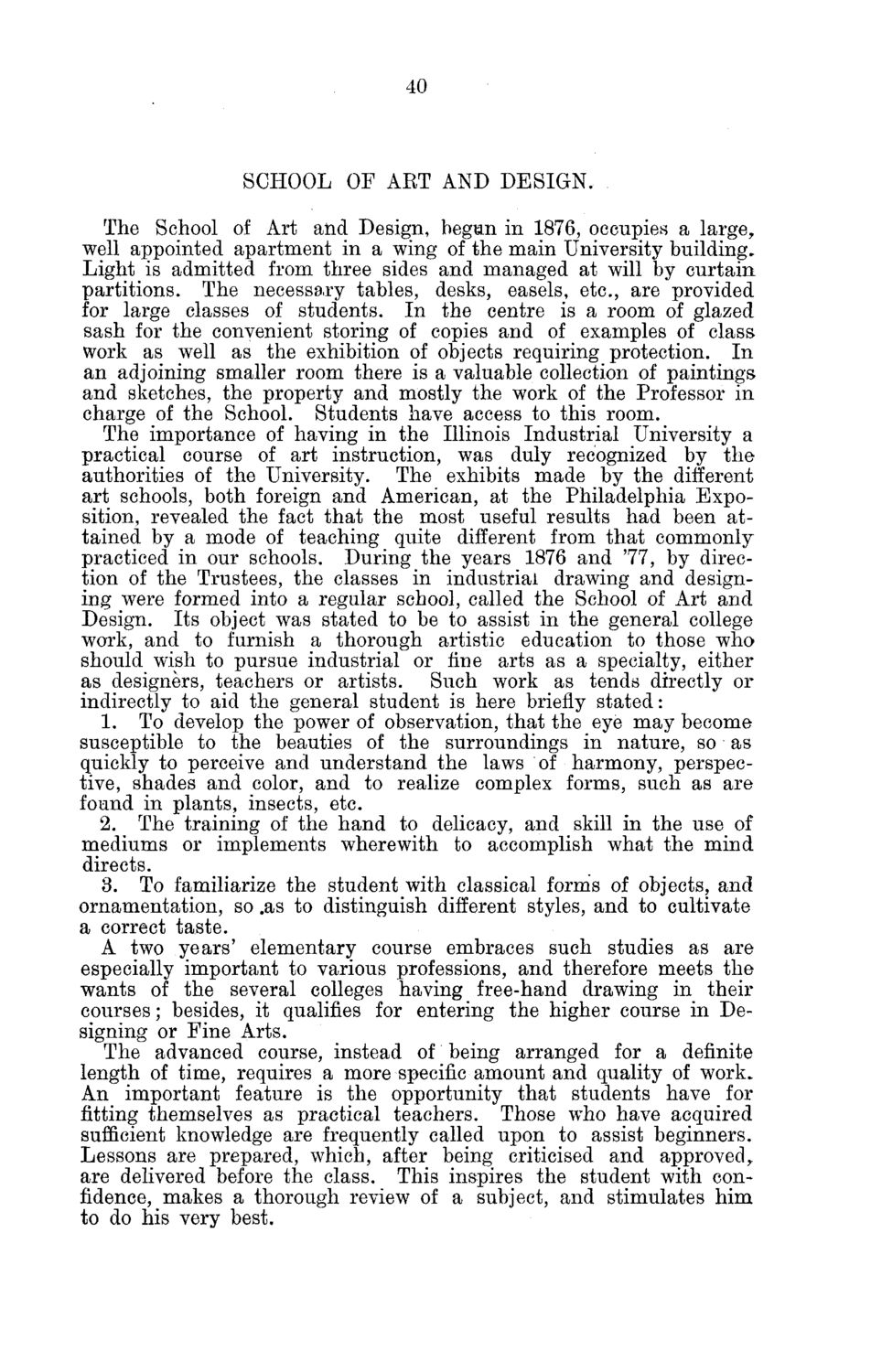| |
| |
Caption: Board of Trustees Minutes - 1880
This is a reduced-resolution page image for fast online browsing.

EXTRACTED TEXT FROM PAGE:
40 SCHOOL OF AKT AND DESIGN. The School of Art and Design, begun in 1876, occupies a large, well appointed apartment in a wing of the main University building. Light is admitted from three sides and managed at will by curtain partitions. The necessary tables, desks, easels, etc., are provided for large classes of students. In the centre is a room of glazed sash for the convenient storing of copies and of examples of classwork as well as the exhibition of objects requiring protection. In an adjoining smaller room there is a valuable collection of paintings and sketches, the property and mostly the work of the Professor in charge of the School. Students have access to this room. The importance of having in the Illinois Industrial University a practical course of art instruction, was duly recognized by the authorities of the University. The exhibits made by the different art schools, both foreign and American, at the Philadelphia Exposition, revealed the fact that the most useful results had been attained by a mode of teaching quite different from that commonly practiced in our schools. During the years 1876 and '77, by direction of the Trustees, the classes in industrial drawing and designing were formed into a regular school, called the School of Art and Design. Its object was stated to be to assist in the general college work, and to furnish a thorough artistic education to those who should wish to pursue industrial or fine arts as a specialty, either as designers, teachers or artists. Such work as tends directly or indirectly to aid the general student is here briefly stated: 1. To develop the power of observation, that the eye may become susceptible to the beauties of the surroundings in nature, so as quickly to perceive and understand the laws of harmony, perspective, shades and color, and to realize complex forms, such as are found in plants, insects, etc. 2. The training of the hand to delicacy, and skill in the use of mediums or implements wherewith to accomplish what the mind directs. 3. To familiarize the student with classical forms of objects, and ornamentation, so .as to distinguish different styles, and to cultivate a correct taste. A two years' elementary course embraces such studies as are especially important to various professions, and therefore meets the wants of the several colleges having free-hand drawing in their courses; besides, it qualifies for entering the higher course in Designing or Fine Arts. The advanced course, instead of being arranged for a definite length of time, requires a more specific amount and quality of work. An important feature is the opportunity that students have for fitting themselves as practical teachers. Those who have acquired sufficient knowledge are frequently called upon to assist beginners. Lessons are prepared, which, after being criticised and approvedy are delivered before the class. This inspires the student with confidence, makes a thorough review of a subject, and stimulates him to do his very best.
| |